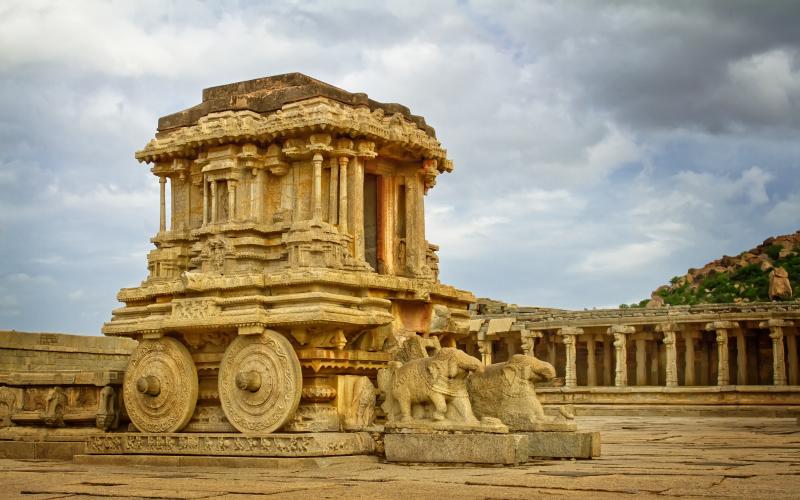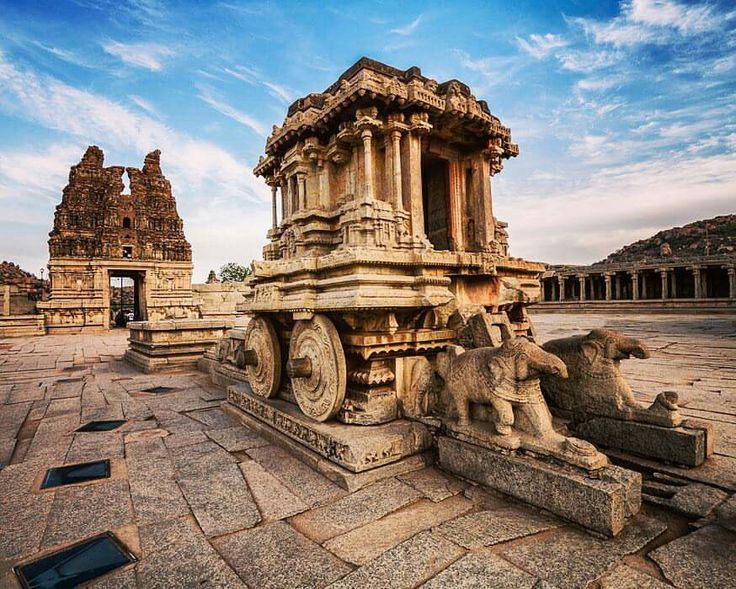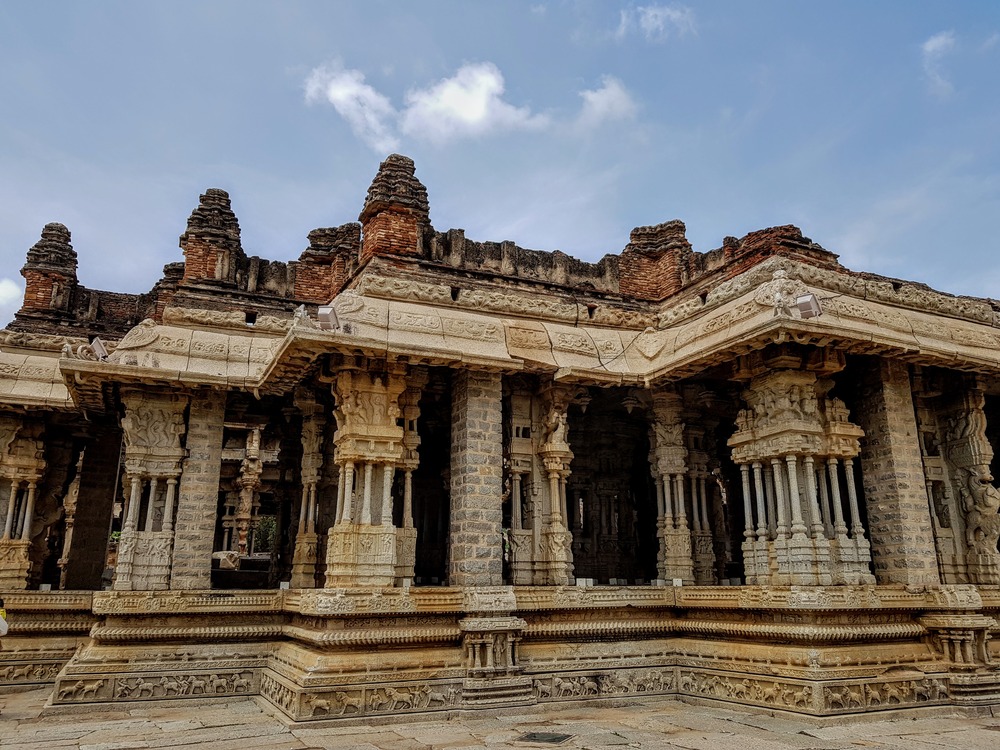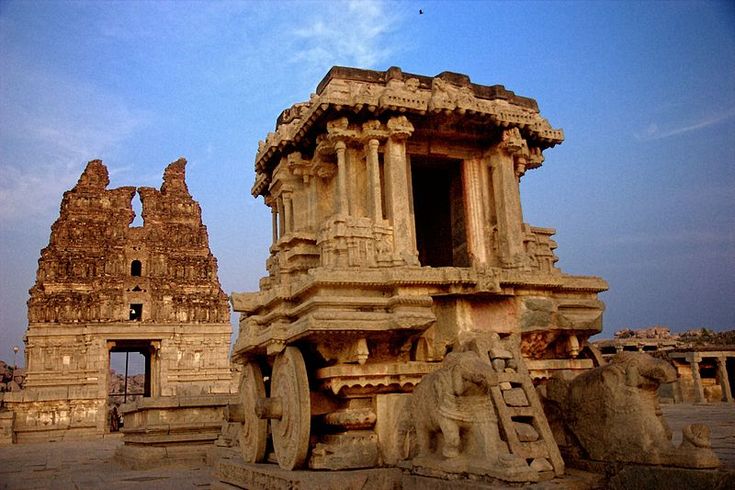The Stone Chariot Hampi, a jewel of Vijayanagara architecture, stands as a testament to the grandeur and ingenuity of ancient Indian engineering. Located in the UNESCO World Heritage Site of Hampi in Karnataka, India, this remarkable structure has captivated historians, archaeologists, and tourists alike with its intricate design and historical significance. In this article, we will explore the fascinating history, architectural brilliance, and cultural importance of the Stone Chariot, providing a comprehensive overview that will engage and inform readers.
The Historical Context of stone chariot hampi
The Vijayanagara Empire
To truly appreciate the Stone Chariot Hampi, it is essential to understand the context in which it was created. The Stone Chariot was constructed during the Vijayanagara Empire, which flourished from the 14th to the 17th centuries. Founded by Harihara I and Bukka Raya I, the Vijayanagara Empire was known for its military prowess, economic strength, and cultural achievements. The empire’s capital, Hampi, was a thriving city with stunning temples, palaces, and markets, reflecting the wealth and sophistication of the time.
Construction of the Stone Chariot hampi
The Stone Chariot Hampi, also known as the Rukmini Temple Chariot, was built in the 15th century during the reign of King Devaraya II. It is situated within the Vitthala Temple complex, which is dedicated to Lord Vitthala, a form of Lord Vishnu. The chariot was created to serve both religious and ceremonial purposes, symbolizing the divine chariot of the gods and showcasing the artistic and engineering skills of the Vijayanagara craftsmen.

Architectural Marvel of Stone Chariot Hampi
Design and Structure
The Stone Chariot Hampi is a static structure crafted entirely from granite. It is designed to resemble a chariot drawn by horses, with four intricately carved wheels and a central platform. The chariot’s design is both functional and symbolic, reflecting the advanced engineering techniques of the Vijayanagara era. The wheels of the chariot are carved with realistic spoke patterns, adding to the illusion of motion. The chariot is adorned with elaborate carvings depicting various deities, celestial beings, and mythological scenes.
Symbolic Significance
The Stone Chariot Hampi is not just an architectural marvel but also a symbol of divine majesty. The chariot represents the vehicle of the gods, transporting them across the heavens. Its design incorporates various elements of Hindu cosmology, with carvings depicting scenes from Hindu mythology and the divine entourage of gods and goddesses. The chariot’s symbolism extends beyond its religious significance, reflecting the cultural values and artistic achievements of the Vijayanagara Empire. Learn about Architectures of Humayun’s Tomb.

Artistic Features
The artistry of the Stone Chariot Hampi is remarkable for its precision and detail. The carvings on the chariot include scenes from the Ramayana and Mahabharata, two epic Hindu scriptures. The craftsmanship of the artisans is evident in the intricate details of the carvings, including the textures of garments, the expressions of the figures, and the decorative motifs. The chariot’s artistry exemplifies the high level of skill achieved by the craftsmen of the Vijayanagara period.
The Stone Chariot Hampi and the Vitthala Temple Complex
Religious and Cultural Importance
The Stone Chariot Hampi is an integral part of the Vitthala Temple complex, which is one of the most important religious sites in Hampi. The temple is dedicated to Lord Vitthala, a form of Lord Vishnu, and is renowned for its distinctive Dravidian architectural style. The Stone Chariot’s placement within the temple complex highlights its role in religious ceremonies and processions. It is believed that the chariot was used to carry sacred deities during festivals and special occasions, symbolizing the divine presence of the gods.
The Temple Complex Layout
The Vitthala Temple complex is a sprawling site with several notable structures, including the iconic Stone Chariot. The temple features a series of pillared halls, courtyards, and sanctums, all adorned with intricate carvings and sculptures. The Stone chariot Hampi is situated in the outer courtyard, surrounded by a series of massive columns and pavilions. The complex’s layout reflects the architectural sophistication of the Vijayanagara Empire and the importance of the Stone Chariot within the temple’s religious and cultural framework. Learn about The Majesty of India Gate.

Preservation and Tourism
Efforts to Preserve the Stone Chariot Hampi
The Stone Chariot, along with the rest of the Hampi ruins, faces challenges related to preservation and conservation. The effects of weathering, erosion, and human impact have posed significant threats to the structural integrity of the chariot. To address these challenges, various preservation and restoration projects have been undertaken. These efforts aim to protect the chariot from further damage and ensure its longevity for future generations. Conservationists and archaeologists work diligently to maintain the structural stability of the chariot and safeguard its artistic and historical value.
Tourist Attraction
The Stone Chariot Hampi is a major tourist attraction, drawing visitors from around the world who come to marvel at its architectural and artistic splendor. The site’s inclusion in the UNESCO World Heritage Site designation for Hampi has further boosted its profile as a cultural landmark. Tourists are captivated by the chariot’s intricate carvings, historical significance, and symbolic value. The influx of visitors contributes to the local economy and raises awareness about the rich heritage of the Vijayanagara Empire. Explore The beauty of Red Fort Delhi.
Fascinating Facts About the Stone Chariot
- Engineering Feat: The Stone Chariot is carved from a single block of granite, showcasing the advanced engineering skills of the Vijayanagara craftsmen. The precision in the carving and the realistic depiction of the chariot’s wheels highlight the artisans’ expertise.
- Symbolic Imagery: The chariot’s carvings include depictions of various gods, goddesses, and mythological figures, each symbolizing different aspects of Hindu cosmology. The detailed artwork reflects the cultural and religious beliefs of the Vijayanagara Empire.
- Cultural Legacy: The Stone Chariot is not only an architectural marvel but also a symbol of the rich cultural heritage of Hampi. Its design and artistry represent the artistic achievements and religious traditions of the Vijayanagara period.
- Tourism and Heritage: As a UNESCO World Heritage Site, Hampi and its monuments, including the Stone Chariot, attract millions of tourists annually. The site’s preservation and conservation efforts are crucial in maintaining its historical and cultural significance.

Conclusion
The Stone Chariot Hampi stands as a timeless symbol of ancient Indian engineering and artistic excellence. Its historical significance, architectural brilliance, and cultural importance make it a must-visit landmark for anyone interested in the rich heritage of India. By exploring the Stone Chariot, visitors can gain a deeper appreciation for the artistry and engineering prowess of the Vijayanagara Empire and witness the grandeur of a bygone era. Explore The Agra Fort Adventure.
Whether you are a history enthusiast, an architecture aficionado, or simply a curious traveler, the Stone Chariot Hampi promises an unforgettable experience. Its intricate carvings, symbolic design, and historical context offer a fascinating glimpse into the cultural and religious life of ancient India. The Stone Chariot is not just a relic of the past but a living testament to the enduring legacy of one of India’s greatest civilizations.


